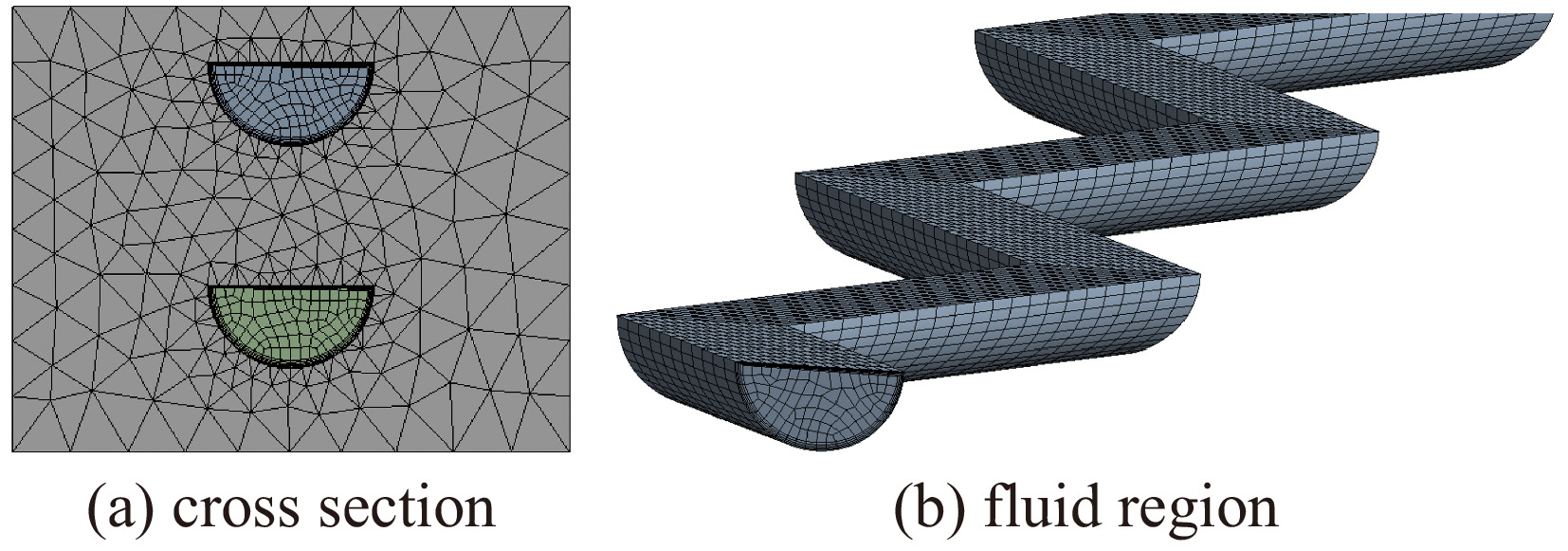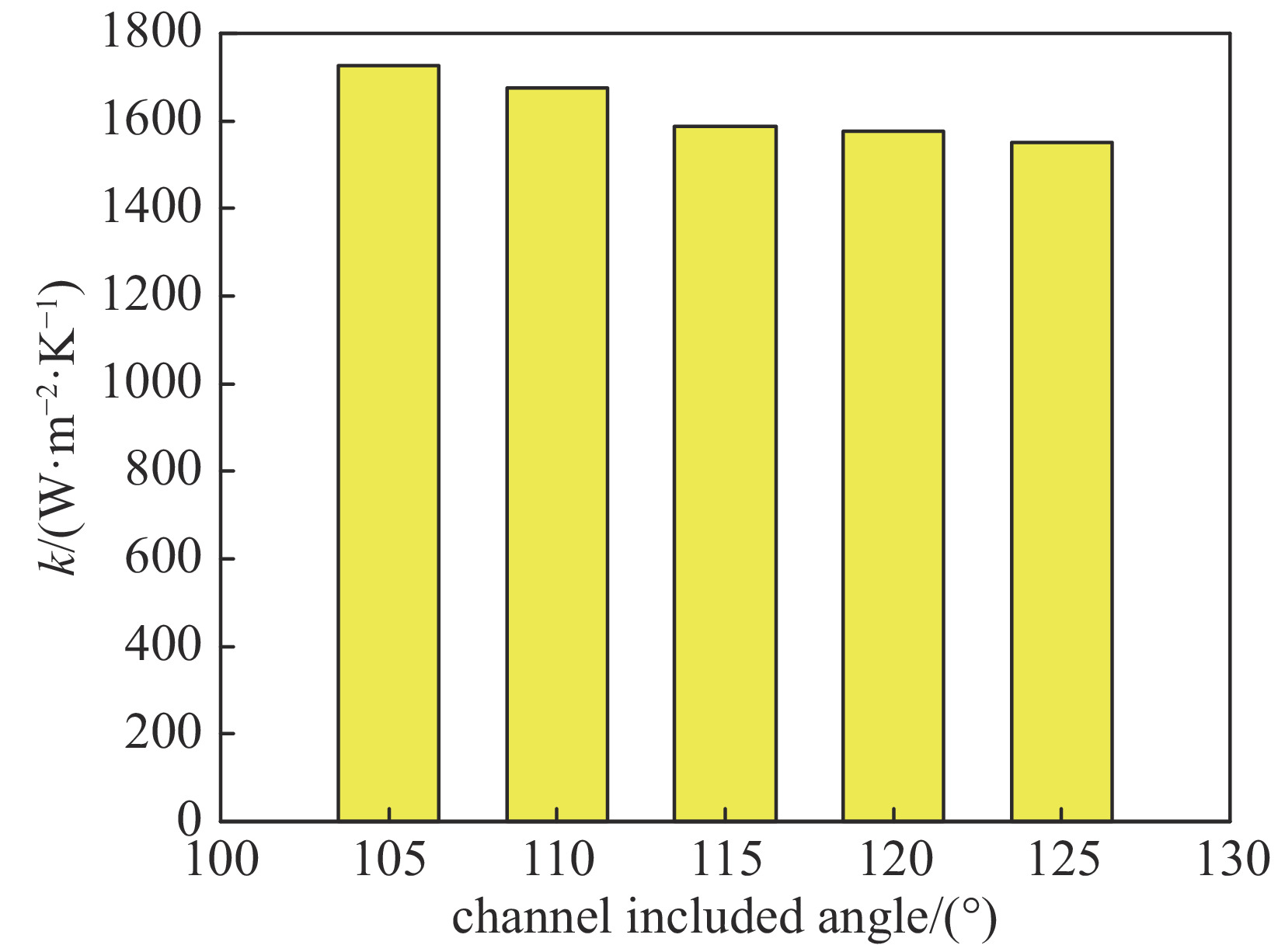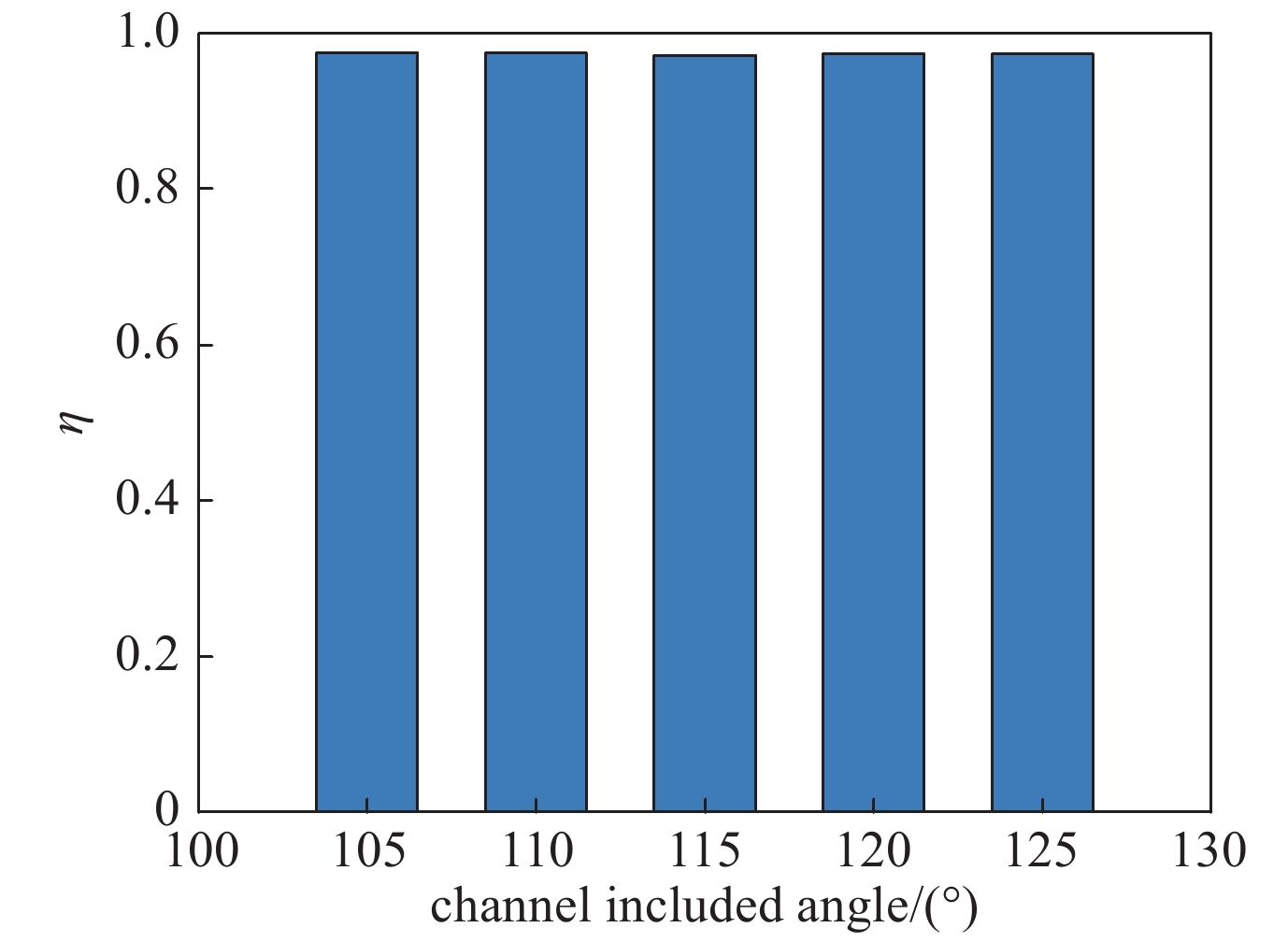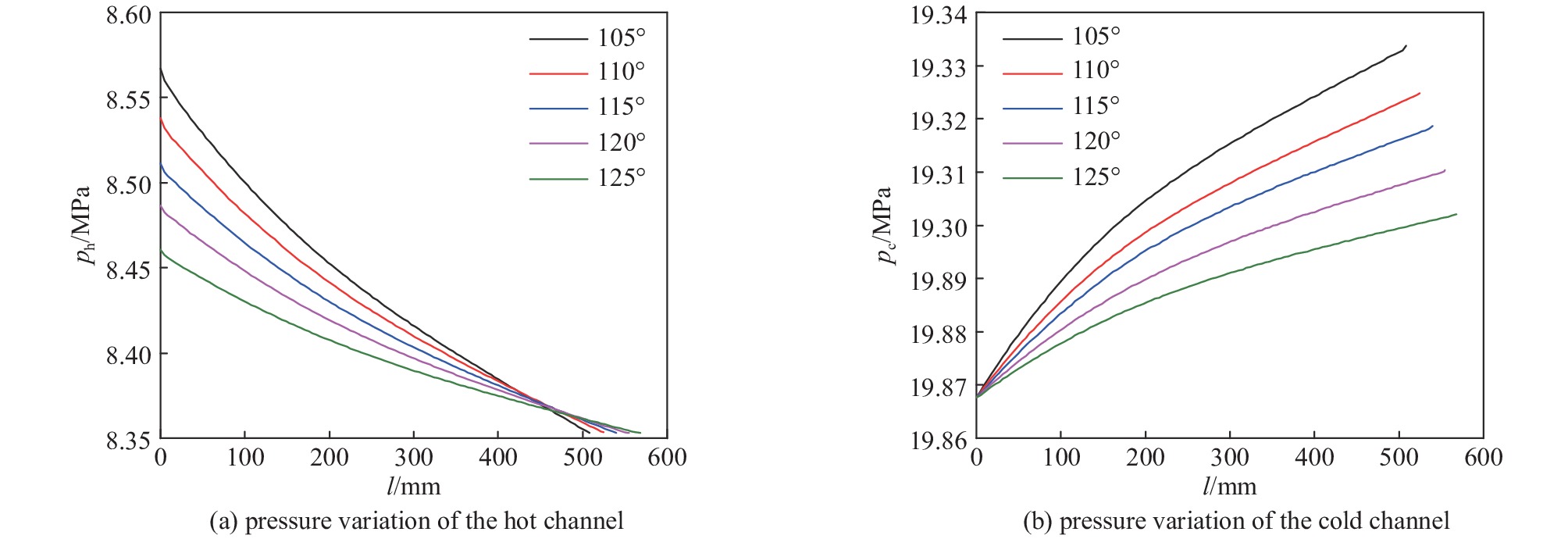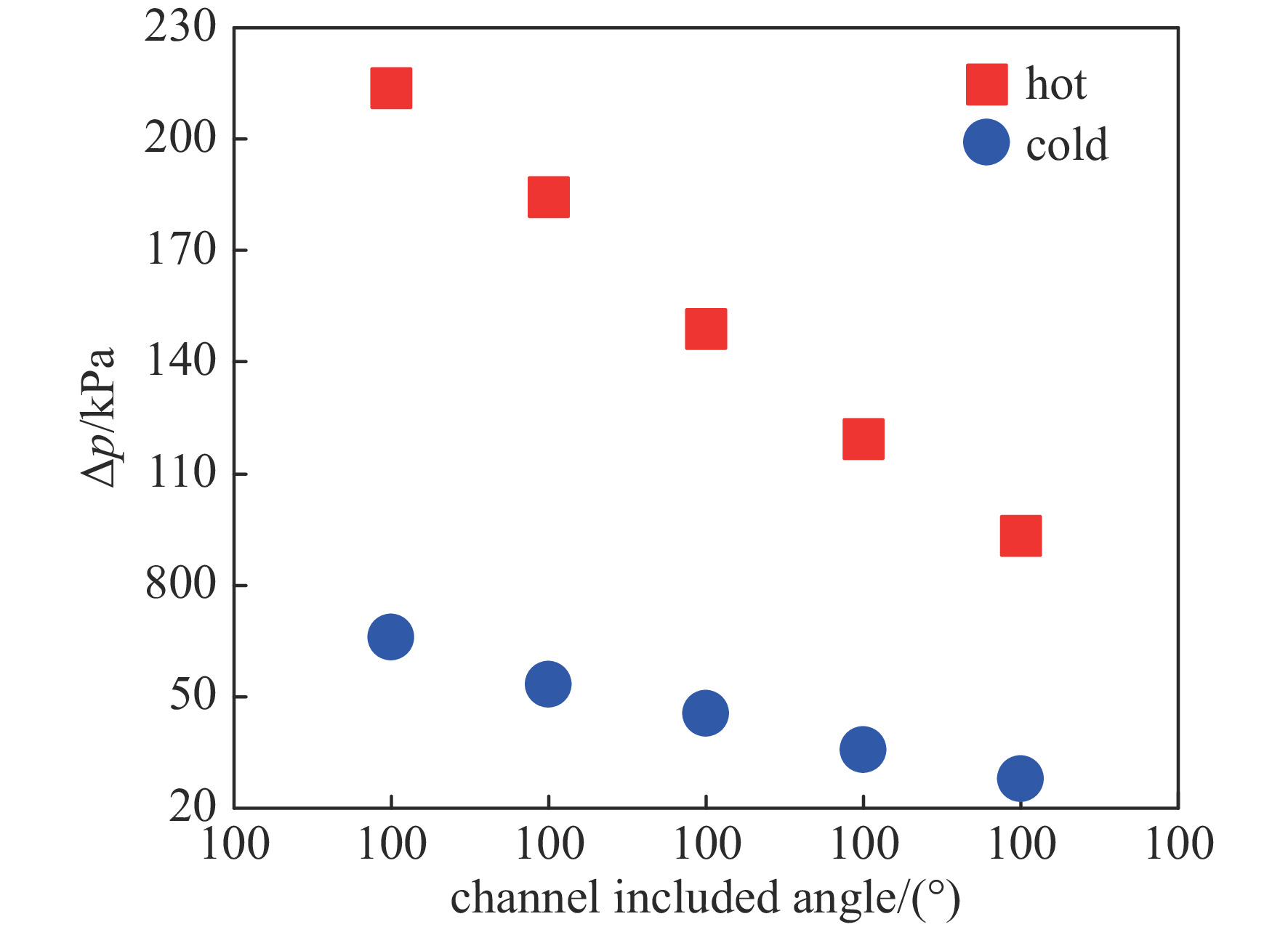Investigation into optimum design of recuperator at a confirmed heat transfer area
-
摘要: 为探究印刷电路板换热器(PCHE)Z型通道中超临界CO2的换热特性,在换热面积固定的前提下指导回热器优化设计,采用数值模拟方法对CO2-CO2耦合换热的局部和整体特性进行了分析,通过CFD计算得到典型PCHE结构和典型工况下回热器的换热特性,与实验结果进行对比,验证计算模型。并利用此模型计算具有相同换热面积、不同通道结构的回热器的局部和整体换热性能,厘清结构参数对换热性能的影响规律。研究表明,计算结果与实验结果吻合,当通道夹角从110°增加至115°时换热系数出现最大幅度的下降,根据不同的设计需求,最佳的夹角范围为110°~120°。
-
关键词:
- 超临界CO2 /
- 换热特性 /
- 印刷电路板换热器(PCHE) /
- 回热器 /
- 换热面积
Abstract: This study aims to investigate the heat transfer characteristics of supercritical CO2 when flowing through the printed circuit heat exchanger with Z type channel, and further guide the optimum design of recuperator at confirmed heat transfer area. Numerical simulation is used to analyze the local and overall heat transfer characteristics between CO2 at two pressures. The heat transfer characteristics of a recuperator with typical structure are calculated at a typical working condition, and compared to the experimental results to check the computation model. Then, the heat transfer characteristics of the recuperator with the same heat transfer area but different channel structure are calculated. The effect law of the structure on heat transfer is explored. The study shows that the calculation results have good agreement with the experimental results. The heat transfer coefficient decreases the most when the channel included angle increases from 110° to 115°and the advised range is 110°−120° for different design requirements. -
表 1 回热器测试件结构参数
Table 1. Geometry information of the test recuperator
channel diameter/mm channel included angle/(°) pitch size/mm plate No. channel No. at each plate pitch No. hot side 1.5 115 9 30 27 60 cold side 1.5 115 9 31 27 表 2 换热性能计算结果与实验结果对比
Table 2. Comparison of the heat transfer performance between simulation and tests
condition Th,i/K Th,o/K ph/MPa Tc,i/K Tc,o/K pc/MPa η/% case1 test 699.45 369.15 8.4 357.75 610.85 19.3 95.2 parallel 699.45 362.78 8.4 357.75 617.48 19.3 97.2 stagered 699.45 362.75 8.4 357.75 617.68 19.3 97.3 case2 test 705.15 363.25 7.6 355.45 601.85 20.6 94.2 simulation 705.15 360.43 7.6 355.45 619.95 20.6 98.2 -
[1] Crespi F, Gavagnin G, Sánchez D, et al. Supercritical carbon dioxide cycles for power generation: a review[J]. Applied Energy, 2017, 195: 152-183. doi: 10.1016/j.apenergy.2017.02.048 [2] Liu Yaping, Wang Ying, Huang Diangui. Supercritical CO2 Brayton cycle: a state-of-the-art review[J]. Energy, 2019, 189: 115900. doi: 10.1016/j.energy.2019.115900 [3] Wu Pan, Ma Yunduo, Gao Chuntian, et al. A review of research and development of supercritical carbon dioxide Brayton cycle technology in nuclear engineering applications[J]. Nuclear Engineering and Design, 2020, 368: 110767. doi: 10.1016/j.nucengdes.2020.110767 [4] Zhao Yongming, Zhao Lifeng, Wang Bo, et al. Thermodynamic analysis of a novel dual expansion coal-fueled direct-fired supercritical carbon dioxide power cycle[J]. Applied Energy, 2018, 217: 480-495. doi: 10.1016/j.apenergy.2018.02.088 [5] White M T, Bianchi G, Chai L, et al. Review of supercritical CO2 technologies and systems for power generation[J]. Applied Thermal Engineering, 2021, 185: 116447. doi: 10.1016/j.applthermaleng.2020.116447 [6] Nikitin K, Kato Y, Ngo L. Printed circuit heat exchanger thermal–hydraulic performance in supercritical CO2 experimental loop[J]. International Journal of Refrigeration, 2006, 29(5): 807-814. doi: 10.1016/j.ijrefrig.2005.11.005 [7] Kim I H, No H C, Lee J I, et al. Thermal hydraulic performance analysis of the printed circuit heat exchanger using a helium test facility and CFD simulations[J]. Nuclear Engineering and Design, 2009, 239(11): 2399-2408. doi: 10.1016/j.nucengdes.2009.07.005 [8] Kim I H, No H C. Thermal hydraulic performance analysis of a printed circuit heat exchanger using a helium-water test loop and numerical simulations[J]. Applied Thermal Engineering, 2011, 31(17/18): 4064-4073. [9] Kim S G, Lee Y, Ahn Y, et al. CFD aided approach to design printed circuit heat exchangers for supercritical CO2 Brayton cycle application[J]. Annals of Nuclear Energy, 2016, 92: 175-185. [10] Chen Minghui, Sun Xiaodong, Christensen R N, et al. Pressure drop and heat transfer characteristics of a high-temperature printed circuit heat exchanger[J]. Applied Thermal Engineering, 2016, 108: 1409-1417. doi: 10.1016/j.applthermaleng.2016.07.149 [11] Yoon S H, No H C, Kang G B. Assessment of straight, zigzag, S-shape, and airfoil PCHEs for intermediate heat exchangers of HTGRs and SFRs[J]. Nuclear Engineering and Design, 2014, 270: 334-343. doi: 10.1016/j.nucengdes.2014.01.006 [12] 高毅超, 夏文凯, 龙颖, 等. 管径和转折角对Z型PCHE换热及压降影响的研究[J]. 热能动力工程, 2019, 34(2):94-100. (Gao Yichao, Xia Wenkai, Long Ying, et al. Study on the effects of channel width and fin angle on heat transfer and pressure drop of zigzag PCHE[J]. Journal of Engineering for Thermal Energy and Power, 2019, 34(2): 94-100 [13] 张虎忠. 超临界CO2印刷电路板换热器性能研究[D]. 北京: 中国科学院工程热物理研究所, 2020Zhang Huzhong. Study on the thermal-hydraulic performance of printed circuit heat exchanger with supercritical carbon dioxide[D]. Beijing: Institute of Engineering Thermophysics, Chinese Academy of Sciences, 2020 [14] Xiang Mengru, Guo Jingfeng, Huai Xiulan, et al. Thermal analysis of supercritical pressure CO2 in horizontal tubes under cooling condition[J]. The Journal of Supercritical Fluids, 2017, 130: 389-398. doi: 10.1016/j.supflu.2017.04.009 [15] Ma Ting, Li Lei, Xu Xiangyang, et al. Study on local thermal–hydraulic performance and optimization of zigzag-type printed circuit heat exchanger at high temperature[J]. Energy Conversion and Management, 2015, 104: 55-66. doi: 10.1016/j.enconman.2015.03.016 [16] Son S, Heo J Y, Lee J I. Prediction of inner pinch for supercritical CO2 heat exchanger using artificial neural network and evaluation of its impact on cycle design[J]. Energy Conversion and Management, 2018, 163: 66-73. doi: 10.1016/j.enconman.2018.02.044 [17] Cui Xinying, Xiang Mengru, Guo Jiangfeng, et al. Analysis of coupled heat transfer of supercritical CO2 from the viewpoint of distribution coordination[J]. The Journal of Supercritical Fluids, 2019, 152: 104560. doi: 10.1016/j.supflu.2019.104560 -






 下载:
下载:
